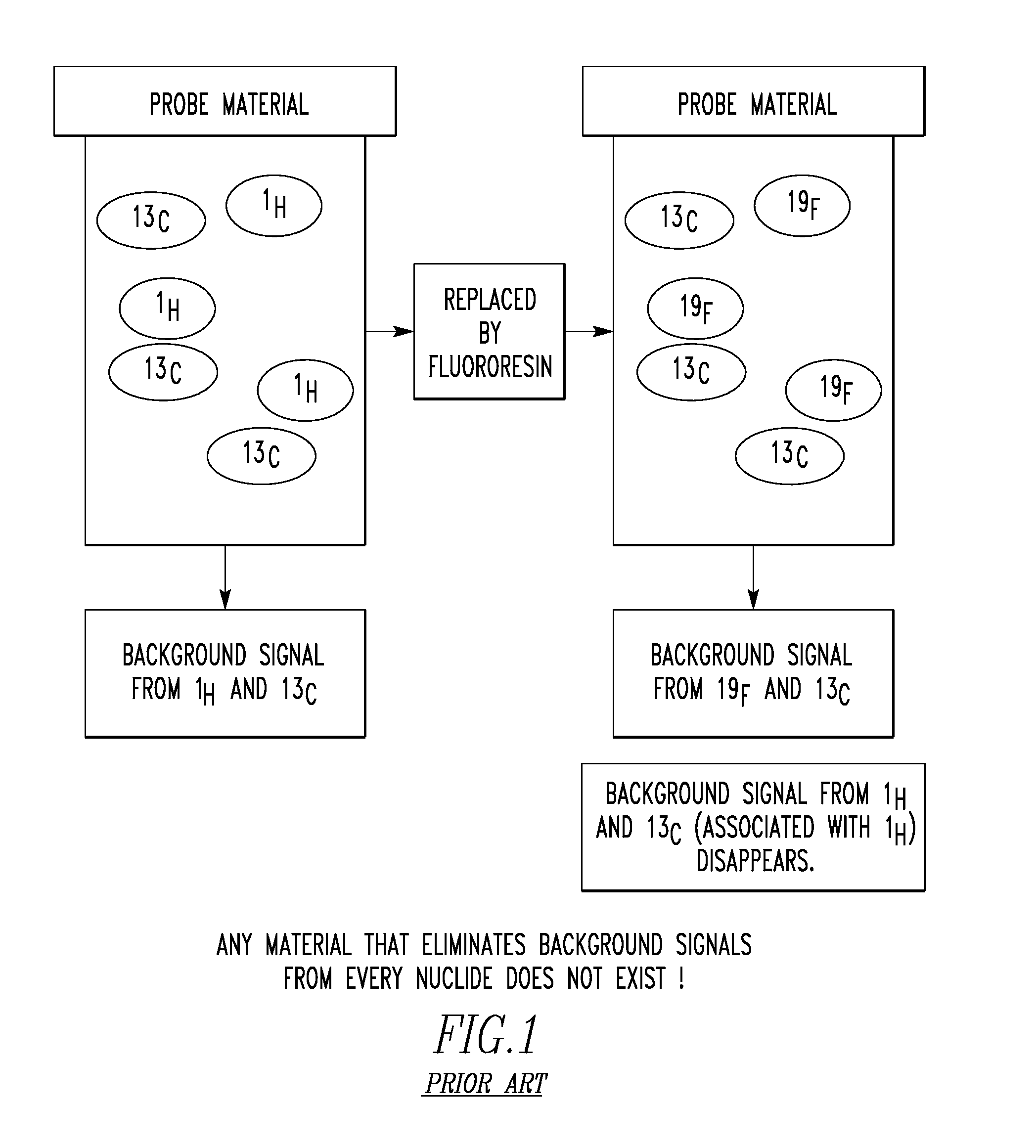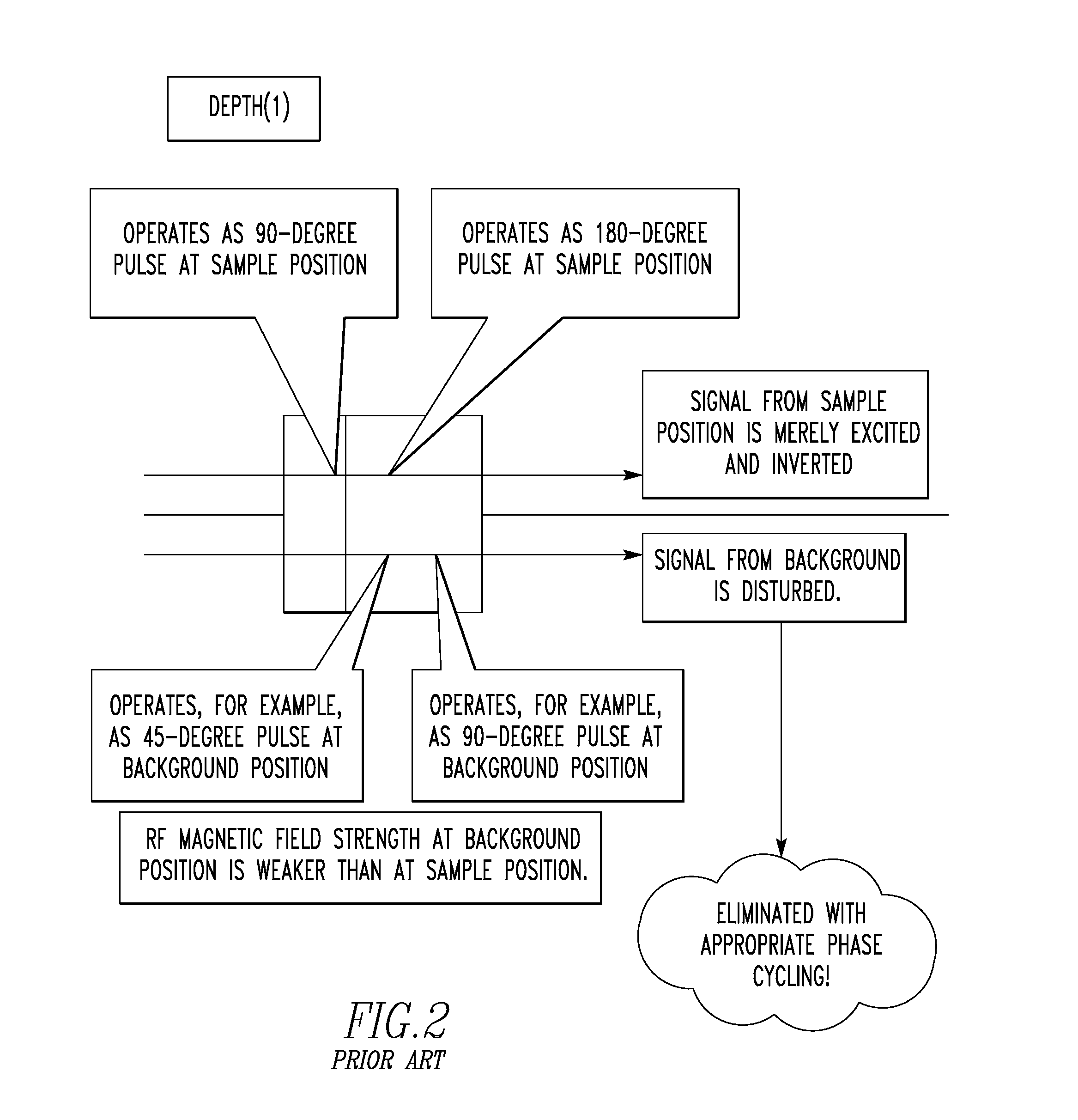NMR Measurement Method
- Summary
- Abstract
- Description
- Claims
- Application Information
AI Technical Summary
Benefits of technology
Problems solved by technology
Method used
Image
Examples
embodiment 1
[0033]We have discovered that the approach DEPTH taken while paying attention to differences in RF magnetic field strength B1 can be essentially attributed to coherence selection.
[0034]On the other hand, cogwheel phase cycling has been proposed as one technique for reducing the number of phase cycling steps while taking notice of coherence selection (see M. H. Levitt, P. K. Madhu, C. E. Hughes, Journal of Magnetic Resonance, vol. 155, pp. 300-306 (2002)). In this cogwheel phase cycling, a pulse sequence consisting of plural pulses is divided into plural blocks. Whenever a measurement is performed, the RF phases of the blocks are simultaneously increased by their respective factors (at their respective ratios). This technique yields the same advantageous effects as the prior art phase cycling although the number of phase cycling steps is fewer.
[0035]This cogwheel phase cycling has been used, for example, in MQ-MAS (multiple-quantum magic-angle spinning) for solid-state NMR spectrosco...
embodiment 2
[0070]The background signal suppression according to the present invention is achieved by applying n 180° pulses to transverse magnetization. In embodiment 1, 180° pulses are applied to transverse magnetization generated by a 90° pulse. In embodiment 2, the technique is further generalized. In embodiment 2, combinations of other pulse (e.g., a 270° pulse) or pulse sequence capable of generating transverse magnetization are set forth. If this pulse or pulse sequence is set to a single 90° pulse, then embodiment 1 is obtained.
[0071]Where n of DEPTHn is an odd number, a pulse sequence generating transverse magnetization needs a magnetization of +1. Where n is an even number, a pulse sequence generating transverse magnetization needs a magnetization of −1. An example of DEPTH2 is now discussed.
[0072]A pulse sequence generating transverse magnetization creates a magnetization of −1. First, incompleteness of this pulse sequence is neglected. That is, it is assumed that immediately after t...
PUM
 Login to View More
Login to View More Abstract
Description
Claims
Application Information
 Login to View More
Login to View More - R&D
- Intellectual Property
- Life Sciences
- Materials
- Tech Scout
- Unparalleled Data Quality
- Higher Quality Content
- 60% Fewer Hallucinations
Browse by: Latest US Patents, China's latest patents, Technical Efficacy Thesaurus, Application Domain, Technology Topic, Popular Technical Reports.
© 2025 PatSnap. All rights reserved.Legal|Privacy policy|Modern Slavery Act Transparency Statement|Sitemap|About US| Contact US: help@patsnap.com



